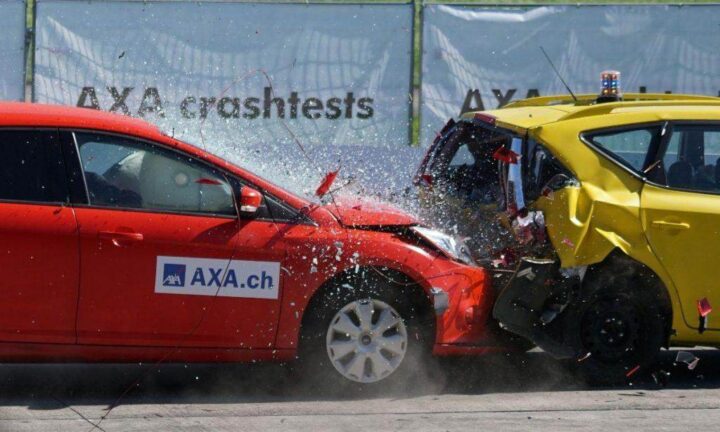Rear-End Collisions and Their Unique Legal and Medical Implications
Rear-end collisions are one of the most common types of car accidents, happening when one vehicle hits the back of another. These accidents often result from sudden stops or distracted driving and affect countless drivers and passengers daily.
While they might seem minor, rear-end collisions can lead to serious injuries and legal issues. Understanding what causes these accidents can help people better handle the aftermath, whether they are victims or the at-fault driver.
After a rear-end collision, factors like liability, legal definitions, and common injuries shape the experience for those involved. Recovery may include dealing with legal matters, seeking medical care, and addressing emotional challenges. Knowing the claims process and taking preventive steps can help drivers manage these situations with more confidence.

Legal Definition and Liability
Liability in rear-end collisions is often straightforward, with the trailing vehicle usually considered at fault. Drivers are expected to keep a safe distance from the car ahead to allow enough time to react.
When this doesn’t happen, the rear driver is typically held responsible for damages and injuries. Common causes of negligence, like distracted driving, tailgating, or failing to respond to sudden stops, are often used to determine fault.
However, certain situations can complicate liability. For example, sudden emergencies, such as a pedestrian unexpectedly crossing the road, may shift responsibility. Brake-check incidents, where a driver intentionally slams on the brakes, add further complexity. When liability becomes unclear, an accident attorney can help clarify responsibility, providing victims with the support needed to pursue compensation.
Common Injuries Resulting from Rear-End Collisions
Injuries from rear-end collisions often result in specific physical issues, with whiplash being one of the most common. This condition occurs when the neck is rapidly jerked back and forth, straining muscles and ligaments. Symptoms like pain, stiffness, and limited movement may not appear immediately and can last for weeks or months, making it harder to connect them to the accident and delaying recovery.
Back pain is another common outcome, ranging from mild strains to severe spinal injuries. Chronic back issues can lead to ongoing pain that affects mobility and daily life.
Head injuries, such as concussions or more severe brain trauma, are also serious concerns, often accompanied by confusion, dizziness, and headaches. Seeking prompt medical attention after a collision is vital for early diagnosis and treatment, helping to prevent long-term complications and supporting recovery.
Insurance Claims Process
Filing an insurance claim after a rear-end collision requires understanding the steps to secure fair compensation. Start by creating a detailed report of the accident, including the time, location, and circumstances. Involving law enforcement is helpful, as a police report provides an objective account to support your claim. Next, notify your insurance company to report the accident and begin the claims process.
The insurance adjuster will assess damages and review your claim, so being well-prepared is key. Gather thorough documentation, such as photos of the damage, witness contact details, and medical records. Challenges often come up from incomplete records or rushed conversations with adjusters, so reviewing your policy, including coverage limits and deductibles, is key to managing expectations.
Emotional and Psychological Effects
The emotional impact of a rear-end collision can be as difficult to deal with as physical injuries. Many victims experience anxiety, whether from the accident itself or a newfound fear of driving.
This unease can disrupt daily life, leading to avoidance behaviors like refusing to drive or ride in a car. For some, the emotional strain may develop into post-traumatic stress disorder (PTSD), which can cause flashbacks, nightmares, and constant alertness, making it hard to function normally.
Depression is also common, as victims may feel helpless or frustrated with the slow pace of recovery. Sadness, low energy, and a sense of lost independence are frequent emotional responses. Seeking psychological support, such as therapy, counseling, or support groups, can help individuals process their feelings and develop coping strategies.
Preventive Measures and Driver Education
Preventing rear-end collisions relies on educating drivers and raising awareness about safe driving practices. A key concept in driver education is maintaining a safe following distance. By learning about stopping distances, drivers can better judge the space needed between vehicles, especially in different traffic conditions.
Regular vehicle maintenance is also essential. Checking brakes, lights, and tires helps maintain safe performance on the road. Drivers can also benefit from technology like adaptive cruise control and collision warning systems, which add an extra layer of safety. Workshops, online courses, and public awareness campaigns can promote safe driving habits and discourage aggressive behavior, encouraging patience and caution.
Rear-end collisions often lead to physical, emotional, and legal difficulties, making preparation and informed choices essential. Understanding who is at fault, seeking medical attention, and handling insurance claims are key steps in the recovery process. Preventing these accidents involves maintaining safe distances and staying focused while driving.
Driver education and regular vehicle maintenance can also lower the risk of such incidents. For those impacted, getting support from medical professionals, counselors, or legal resources can help make recovery more manageable. By addressing both short- and long-term effects, individuals can regain stability and confidence after a rear-end collision.


